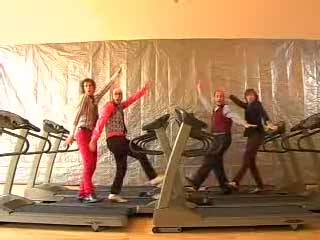 China blocked Youtube again this week after several videos were posted that showed Chinese police violently assaulting Tibetans. On Tuesday, a Chinese news organisation noted what it called a "fabricated" video in which police beat Tibetans during a riot in Lhasa last year. On the same day a Chinese Foreign Ministry spokesman repeated the mantra of Premier Wen Jiabao when he said "we encourage the active use of the internet but also manage the internet according to law." He also claimed that China was “not afraid of the internet" however, he was afraid of a straight answer and refused to confirm if YouTube had been blocked.
China blocked Youtube again this week after several videos were posted that showed Chinese police violently assaulting Tibetans. On Tuesday, a Chinese news organisation noted what it called a "fabricated" video in which police beat Tibetans during a riot in Lhasa last year. On the same day a Chinese Foreign Ministry spokesman repeated the mantra of Premier Wen Jiabao when he said "we encourage the active use of the internet but also manage the internet according to law." He also claimed that China was “not afraid of the internet" however, he was afraid of a straight answer and refused to confirm if YouTube had been blocked.According to the BBC, the graphic video was released by Tibetan exiles and shows hundreds of uniformed troops swarming through a Tibetan monastery. Some of the footage is available here and the full set of three movies can be found at tibetonline.tv. In one scene troops with batons assault a man while in another scene several more men (one of whom is a monk,) are lying on the ground while being beaten, kicked and choked. Some of the men have their hands tied while others are possibly unconscious. Tibetonline.tv says that one of the beaten men later died.
Youtube’s California head office confirmed their service had been blocked after posting the footage but had gotten no explanation from the Chinese authorities. Scott Rubin told AFP the service had been blocked since Monday for unknown reasons and they were working with authorities to restore access. Presumably that means an agreement to pull down the offending videos. In the meantime, Chinese users trying to access YouTube get the following message: "Network Timeout. The server at youtube.com is taking too long to respond."
This is latest in several incidents where China has banned Youtube. The most recent case occured in March last year when Youtube showed graphic images from Tibet, including videos of burning vehicles and monks being dragged through the streets by Chinese soldiers. The videos forced Youtube’s owner Google to choose between losing business opportunities or fighting censorship. And Google’s response is somewhat ambiguous. Robert Boorstin, Google’s director of policy communications says it is a situation that all Internet companies will be facing across the world. "At all times, our goal is to maximize the amount of information available to citizens around the world,” he says. However Google’s own Chinese search service censor its search results to comply with Beijing's strict limits on access to information.
According to Kaiser Kuo, the Chinese government’s censorship policies, often render news and political reporting formulaic,staid, and not reliably objective. He says China’s Internet is more “entertainment superhighway” than “information superhighway” as the local 250 million Internet users typically devote most of their time to downloads, chatting with friends, playing online games, and watching online videos. However, the Internet is developing into the country’s first public sphere; a virtual space, says Kuo where a huge range of ideas are openly expressed.
But censors continue to listen in on the public conversation and Tibetan violence was not the only thing China blocked this week. A video of a seemingly innocuous mythical alpaca-like animal known as the “Grass Mud Horse” complete with its own jaunty children’s song has attracted the ire of authorities because of its double meanings. In Chinese the phrase grass mud horse (Cao Ni Ma) sounds remarkably close to “fuck your mother” and the song is replete with other phrases that sound like either swear words or reference to censorship. As a result the authorities have banned both the video and the song. Judge its seditious intentions for yourself below:






